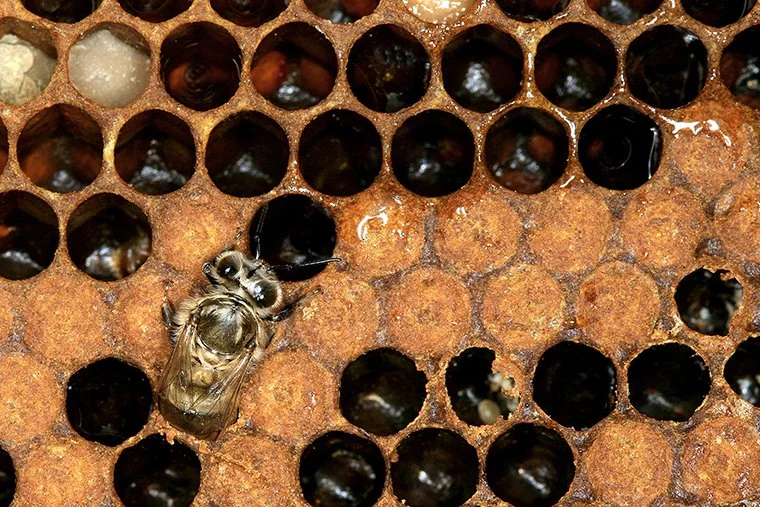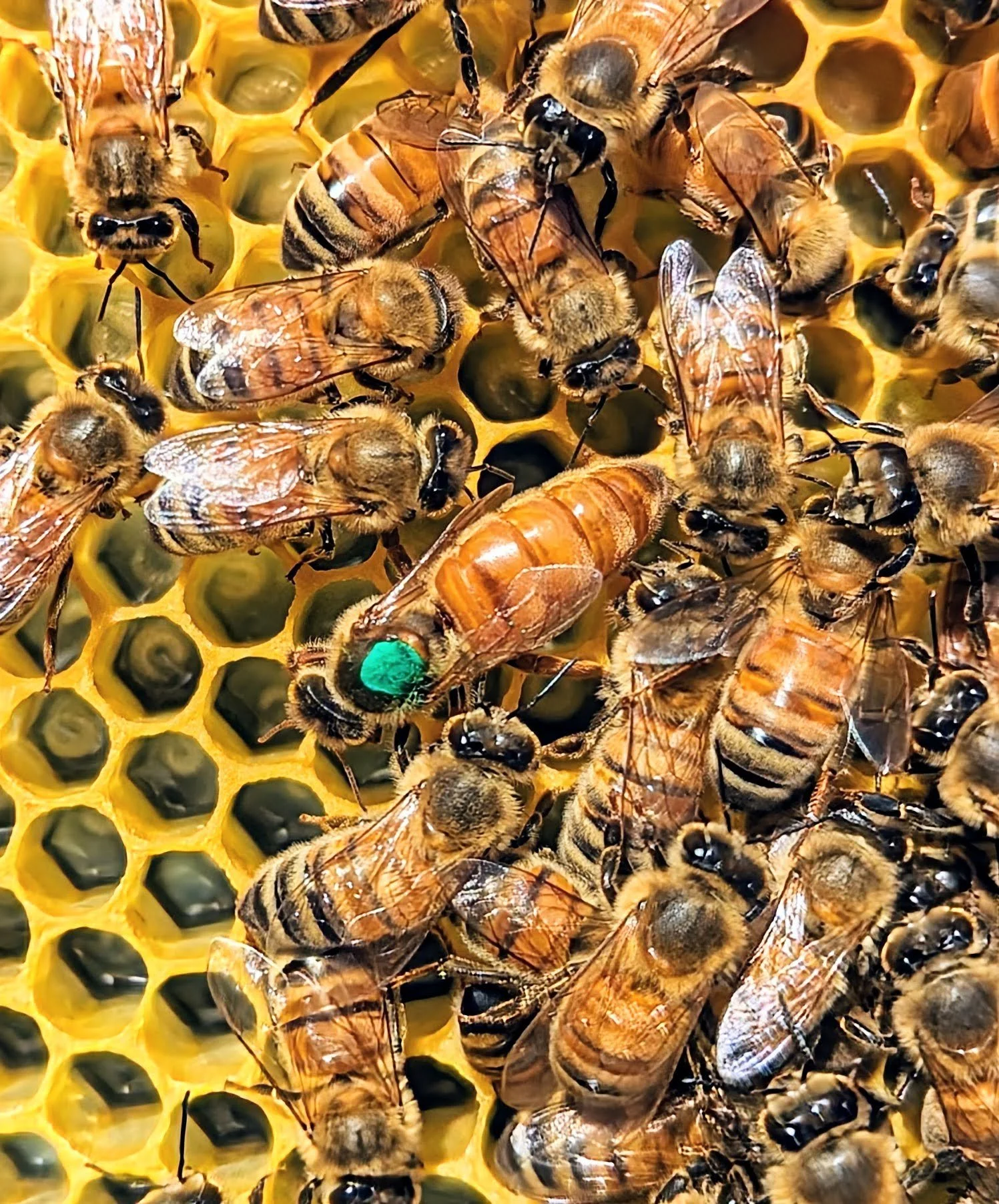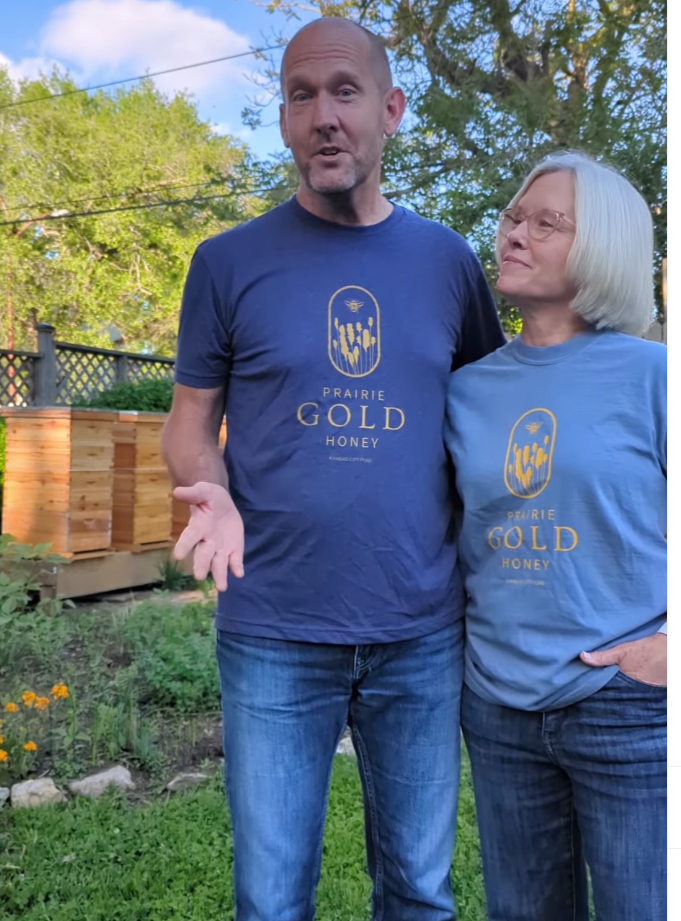The Rhythm of the Bees
At Prairie Gold Honey, we follow the rhythm of the bees. It can’t be rushed, and it’s not always predictable. The rhythm of the bees is synchronized with nature— with the seasons, the weather, and with their own life-cycle. To understand beekeeping is to find this rhythm.
The life-cycle of a worker bee is the drum-beat of a colony’s rhythm. They go through stages that are timed perfectly, from egg, to larvae, to pupae, and emerging as workers 21 days after the egg was laid. Once a worker bee emerges, it goes through a series of stages which include different roles in the hive, from nurse bee, to building comb, to cleaning the hive, and finally 2-3 weeks after emerging from their cell, they begin to forage for pollen and nectar. A worker bee lives around six weeks after emerging from its cell, so if you do the math, it only has about 3-4 weeks as a forager. It can also be deduced that the time from egg to forager is 5-6 weeks, an important fact we’ll come back to in a moment.
In Kansas City, the “nectar flow” usually is the strongest from mid-May through June, a time when lots of flowers are coming into full bloom, especially clover. Of course the weather plays a major role in the timing of available nectar— the right combination of rain, sunshine, and warm weather (not too hot) has a significant effect on the timing and abundance of nectar.
The greater the population of foragers in a hive during the peak nectar flow, the more honey they will produce. While the weather can make the nectar flow unpredictable, the life-cycle of the bees is like clockwork. Ideally, the population of foragers would peak at the same time the nectar flow is strongest. So, working backwards 5-6 weeks on the bee life-cycle, we can see that the queen’s egg-laying activity in early to mid April is paramount— eggs laid during April become the foragers for the May-June nectar flow! If the queen is having problems during April, it will impact honey production in June.
With this in mind, following the rhythm of the bees means considering how we can facilitate the best conditions for the queen to lay in April. Does she have adequate space? Is there empty comb ready for her to lay in? Since there isn’t much nectar or pollen yet, can we stimulate brood production by providing supplemental food sources? Do we need to replace an older queen from a previous season (queens live 3-5 years, but may become less productive or stop laying over time)? How can we prevent swarming (a phenomenon in which the hive splits and part of it leaves to find a new home) during April and May?
As beekeepers, we are observers, caretakers, and students of creation. Our work is to cooperate with nature, to ensure healthy colonies, and to steward well the lives of the tiny creatures that we’ve been entrusted to manage. Beekeeping is a practice where science and art converge— where creative solutions meet scientific observation. When we follow the rhythm of the bees, we tap into the flow of the natural world around us and we reap the benefits in buckets of delicious honey! And when you enjoy a spoonful of honey, you too become part of this magical rhythm.
Join the Prairie Gold Honey Club
Become a member and save $2 per jar on our premium honey.
To become a member, simply purchase a Prairie Gold Honey T-shirt or hoodie and you’re in the club!
Club members also have the opportunity to return our branded jars for an additional $1 off each jar purchased.
And, if you happen to come while I’m bottling honey, and you bring your own jar of any size (branded or not), I’ll fill it up right from the tap, and you’ll pay only $1 per ounce with no mark up for packaging!
Reserve Your Honey Now!
Available in 8 oz and 16 oz Jars








